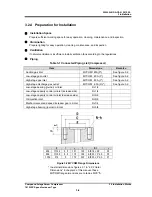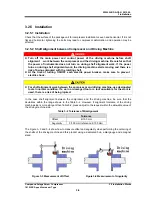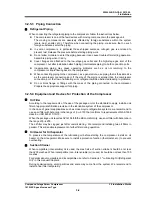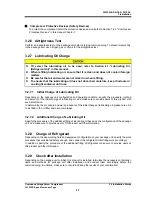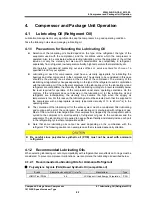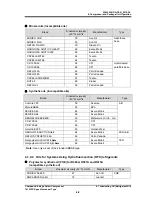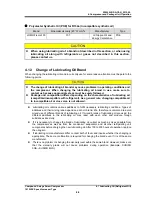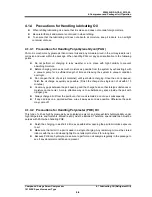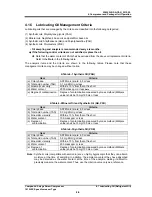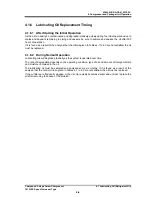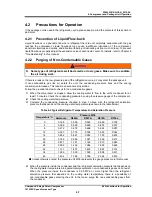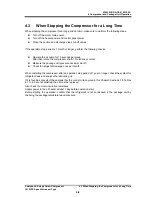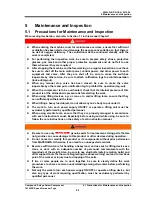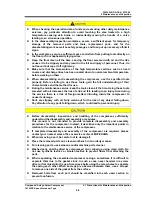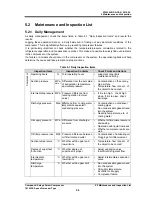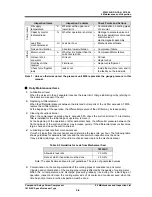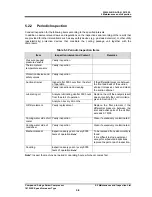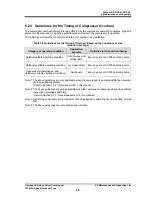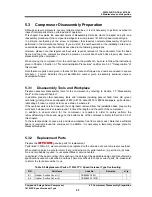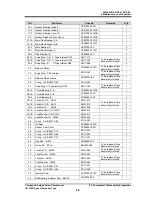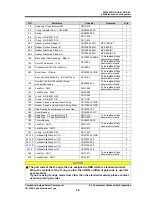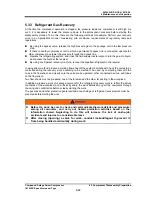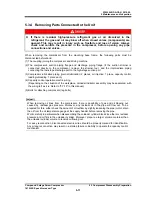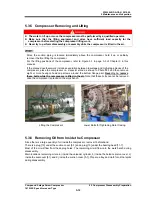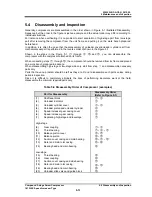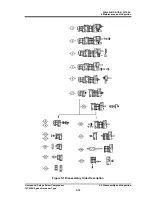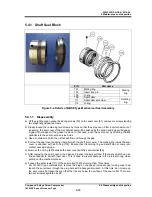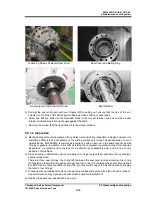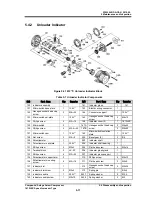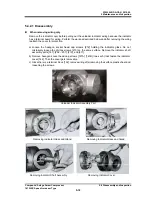
2202L5JE-DA-C5-N_2015.05.
5 Maintenance and Inspection
Compound 2-stage Screw Compressor
5.2 Maintenance and Inspection List
1612LSC Speed Increaser Type
5-3
5.2
Maintenance and Inspection List
5.2.1 Daily
Management
As daily management, check the items listed in Table 5-1 "Daily Inspection Items" and record the
results.
Logging these operation data on a daily basis aid in finding out any abnormal conditions of the
compressor. This is significantly effective in preventing compressor failures.
It is particularly important to check whether the temperature/pressure correlations related to the
refrigerant evaporation and condensation is proper. This makes it possible to quickly find out problems
in the compressor or the system.
If a failure or accident should occur in the compressor or the system, the operation logbook will help
determine the cause and take prompt and proper actions.
Table 5-1 Daily Inspection Items
Inspection Items
Inspection Contents
Check Points and Actions
Comp
re
ss
or
Operating hours
hr
Total operating hours
Judgment of periodic
maintenance timing
Suction pressure
MPa
Note 1
Difference from the set value
of evaporation temperature
equivalent pressure
Contamination on the cooling
pipe surface
Temperature, flow rate, etc. of
the object to be cooled
Intermediate pressure MPa Pressure difference from
rated operation (normal
value)
If it is too high
,
check high-
stage. If it is too low
check
low-stage.
Discharge pressure Mpa Difference from cooling water
temperature equivalent
condensing pressure
Contamination on condenser
cooling pipes
Non-condensable gases mixed
into the system
Quantity, temperature, etc. of
cooling water
Oil supply pressure
MPa Difference from discharge
pressure
Whether differential pressure is
decreasing
Operation with liquid flow-back
Whether compressor parts are
worn
Oil filter pressure loss MPa Pressure difference between
oil filter inlet and outlet
Contamination of lubricating oil
Clogging of oil filter element
Suction temperature
°C Whether within upper and
lower limits
Temperature, flow rate, etc. of
the object to be cooled
Degree of superheat
for suction
°C Whether degree of
superheat is proper
Adjust expansion valve
Insufficient refrigerant flow
Intermediate
temperature
°C Whether within upper and
lower limits
Adjust intermediate expansion
valve
Discharge
temperature
°C Whether within upper limit
Non-condensable gases mixed
into the system
Oil supply temperature,
insufficient oil supply
Compressor
failure

